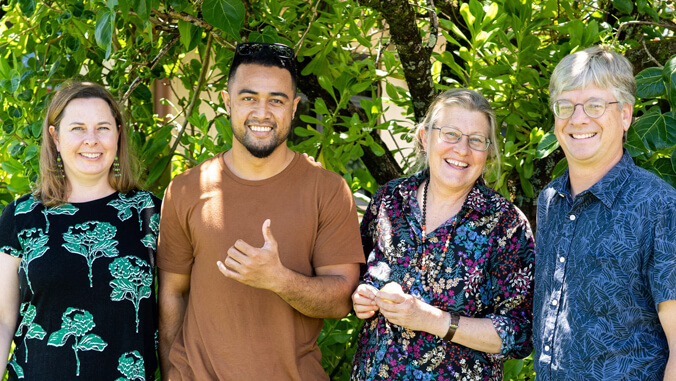
In the waters surrounding Pohnpei, a young researcher set out to protect the coastline he called home. Bryan Tonga, a former marine science major and graduate student at the University of Hawaiʻi at Hilo, led the first island-wide study of nearshore water quality in Pohnpei, part of the Federated States of Micronesia. His work was recently published—nearly four years after his death.
Tonga died in a hiking accident in August 2020, just one class and a completed thesis away from earning his graduate degree in the tropical conservation biology and environmental science program. He was awarded that degree posthumously in 2021. His professors and a classmate at UH Hilo completed Tonga’s study in his honor. Coauthors include fellow student Devon Aguiar, now working in Hilo on coral reef protection, and marine science faculty Tracy Wiegner, Karla McDermid and Steven Colbert.
“Since 2020, we’ve been working on and off to complete his manuscript,” said Wiegner, a marine science professor.
Establishing baseline water conditions

Tonga’s research focused on identifying sewage pollution along Pohnpei’s coastline. He spent two summers collecting water and algae samples from 31 stations around the island.
In a 2020 interview with UH Hilo Stories, Tonga explained, “In order to figure out if the macroalgae are getting nutrients from sewage pollution in the water, we’re taking readings of Nitrogen-15, which has very specific values for human sewage.”
Tonga’s work now serves as a baseline for Pohnpei and other Pacific islands facing climate change.
“In Pohnpei, like here on the island of Hawaiʻi, a lot of houses use cesspools,” Wiegner said. “With rising sea levels, they can become inundated with sea water and sewage can flow out to the nearshore reefs.”
Tonga’s samples were analyzed at UH Hilo’s Analytical Laboratory, where he worked as a student assistant for six years.
Invaluable legacy

His research contributes not only to Pohnpei’s future but to the broader Pacific region’s efforts to protect reefs and manage pollution. Wiegner called his work “cutting edge.”
“He was so happy to see how much he had accomplished,” noted Wiegner. “He was in a good, happy place!”
For more go to UH Hilo Stories.
—By Susan Enright

